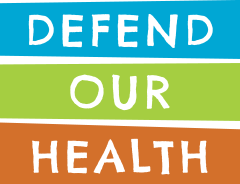Back to School: Packing lunches
July 21, 2021 | Safe Food, Toxic-Free Products | Tags: Environment, K-12, Plastics, Reusable, School lunch
If your kid is off to school this fall, you might be thinking about what to put in lunch boxes. And you may be trying to figure out what kinds of packaging are safe for snacks and meals. Here are some quick facts about different kinds of packaging that might help you through your lunch packing quandaries.
Single-use plastics are, unsurprisingly, pretty much the worst. Even with plastics that are labeled as recyclable, the waste created is tremendous. For many kinds of plastic, the manufacturing process is highly polluting and harms the health of communities that live near plastic manufacturing plants. Then there’s the problem with disposal. Only 8.4% of plastic used in the US gets recycled. And recycling plastic is energy inefficient and often causes even more pollution.
It’s also nearly impossible to avoid buying products packaged in plastics that are tossed after a single use. But some are definitely better than others. look for packaging with recycling numbers 2, 4, and 5. Number 2 is high-density polyethylene (HDPE), and it’s found commonly in milk jugs. Number 4 is low-density polyethylene (LDPE) and it’s used to make Ziploc-style bags. And 5 is polypropylene (PP), which is what most hard, opaque food packaging containers are made of. I checked my kitchen and found peanut butter jars, yogurt, and hummus in PP containers. These three plastics are better for the environment and safest to reuse.
And speaking of reuse, reusable is a great option! There are lots of reusable options out there, ranging from cheap/free to more expensive.
If you’re buying new, glass and stainless steel options are great — they’ll last a long time and are among the safest materials for food contact.
The plastics we just talked about — HDPE, LDPE, and PP — are probably things you already have in your pantry or fridge. Washing out and reusing those jars, tubs, and durable bags can also be a good option. The recycling code tells you what kind of plastic they’re made of so you can stick to safer ones, keep them out of the landfill for longer, and recycle them when they’re no longer usable.
What about school lunch programs? Schools vary wildly in the products they use to serve lunches. Most disposable food trays and compartment plates are made of paper, molded fiber or polystyrene (also called Styrofoam). All of these have their own problems. Polystyrene manufacture is pretty awful for the environment and is almost never recycled. Some paper and molded fiber products (that look kind of like cardboard) may be coated in water-resistant materials, which often contain harmful PFAS chemicals which can leach into food… they definitely shouldn’t be in kids’ lunches. If your school uses molded fiber products, the safest options are the ones that have been identified as compostable by the BPI (Biodegradable Products Institute), since they’re required to be free of PFAS.
Most promisingly, many schools are transitioning to reusable trays, plates, and flatware. While the upfront costs are higher — more durable products are more expensive, and the school will need to invest in high-efficiency industrial dishwashers — these changes pay for themselves within a few years.
What you can do for safer school lunches:
- Join the parents, teachers, and staff at schools across the country that are advocating for reusable foodware products. Our colleagues at the Center for Environmental Health have put together a great toolkit that can help schools make the transition: Ditching Disposables: A Toolkit for Healthier Foodware in K-12 Schools. You can also find more here and here for examples of schools that have transitioned to or successfully piloted programs switching to reusable products.
- Defend Our Health is continuing to fight for safer food packaging materials. Join our mailing list for updates, or donate today to support safer food for everyone.
